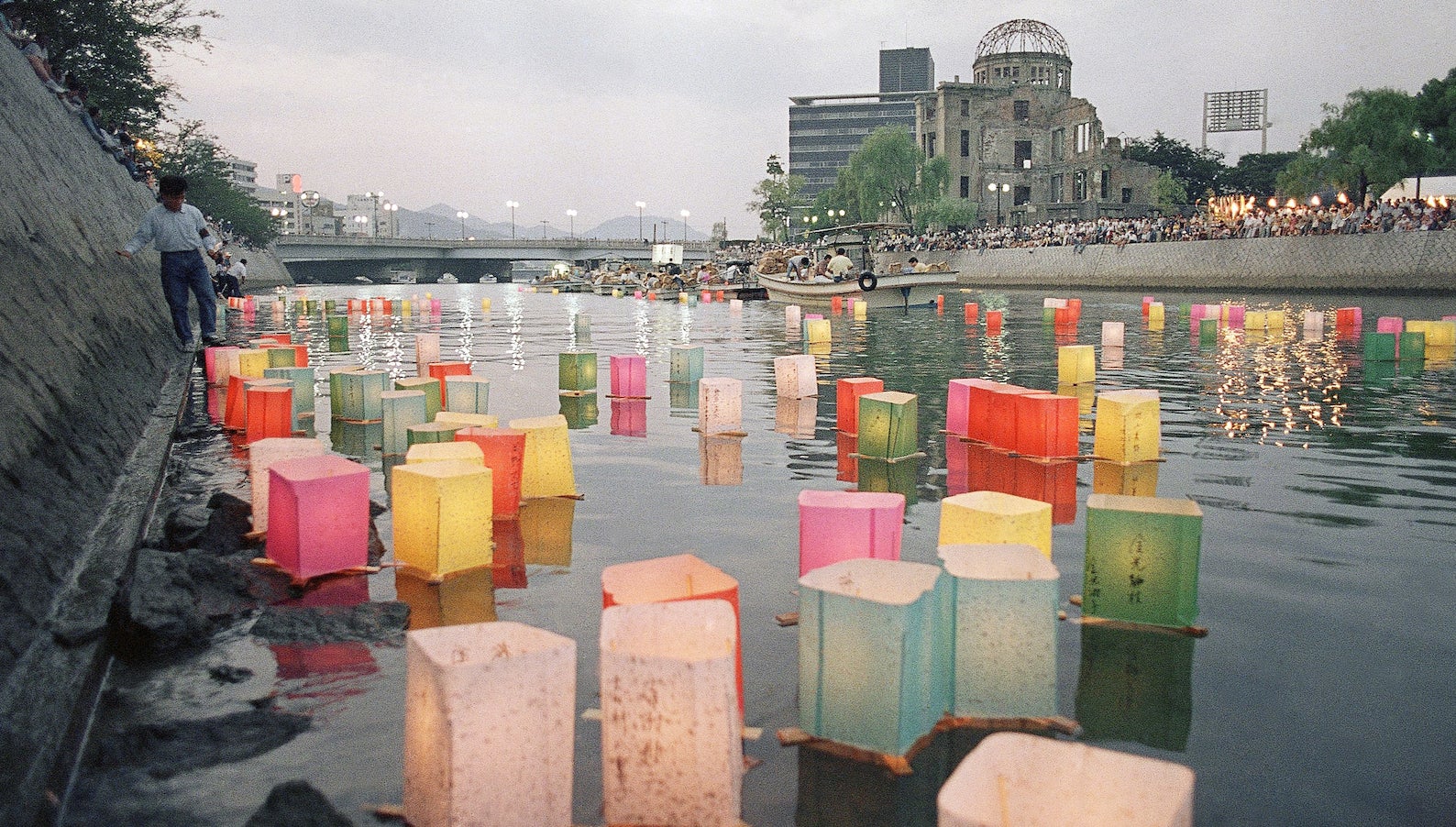It’s clear the US should not have bombed Hiroshima and Nagasaki
This month marks the 70th anniversary of the atomic bombings of Hiroshima and Nagasaki. And with each passing year the historical record is ever clearer that dropping the A-bombs was unnecessary, repugnant and very likely a war crime.


This month marks the 70th anniversary of the atomic bombings of Hiroshima and Nagasaki. And with each passing year the historical record is ever clearer that dropping the A-bombs was unnecessary, repugnant and very likely a war crime.
The bombings probably killed more than 200,000 Japanese civilians and maimed untold more. Such destruction of life stirs me to sorrow and outrage. That’s even more true given that there was an alternative available: the US could have dropped an A-bomb in or near Tokyo Bay. Such a warning shot could have persuaded the Japanese to end the war, and its humane nature would have enhanced the US’s moral standing.
The atomic bombings are often framed as the only alternative to a land invasion of a Japan that wouldn’t surrender under any but the most-dire circumstances. The possible need for an invasion loomed throughout 1945, and Americans naturally feared many US casualties. Much of a fanatic Japanese soldiery—and possibly many citizens—might fight to the last inch. One early study estimated 40,000 American soldiers’ deaths, yet President Harry Truman and others soon spoke of “half a million.”
But the A-bombs’ advent automatically changed that, allowing the US to wield the threat of nuclear attack. With the first device tested and proven in July 1945, and numerous others being readied early in August, America could have used their power as a new dimension of threat—rather than crudely dropping the bombs as mass killers.
Properly used as threats to ensure quick surrender, the A-bombs could have prevented virtually all further deaths in Japan—of Americans, Japanese and any others, from invasion, firebombing, A-bombing and ground warfare. That is, of course, precisely what the A-bombs did achieve. But the US hastily destroyed Hiroshima and Nagasaki first.
Tokyo Bay would have been the ideal place to display the bombs’ power. A large open area, the bay is next to Tokyo and all of Japan’s leaders, including the emperor. It offered a wide array of places—on vacant land or on water—to drop an A-bomb, for fully awesome effect. The mushroom-cloud explosion could be near or not-so-near to Tokyo, and more or less dangerous to Japan’s emperor, leaders, citizens and urban capital.
In this way, the US could have carefully maximized the scope of the threat, while minimizing the harm to Tokyo itself. And if the Japanese were crazily intransigent, we could have simply dropped another A-bomb, closer to Tokyo or in a low-population area. Even another, if needed.
But American leaders had acquired the habit of bombing cities, having attacked Berlin, Hamburg and even the cultural jewel of Dresden. US Air Force leaders such as Jimmy Doolittle gained instant fame from bombing raids over Japan. The hellish firebombing of Tokyo in March 1945 killed some 250,000 civilians and maimed huge numbers more.
With the Japanese A-bombings, a key player was Leslie Groves, who had built up and managed the Manhattan Project over the years. He now chaired the committee guiding Truman’s actions, and he closely managed—daily and hourly—the planning, loading, and crew work to fly the bomb for dropping. Grove was determined to deploy them fast. Separately, a supposed threat of the Soviet Union’s invading Japan was cited as a reason for haste. Such an excuse to rush to bomb can likely be chalked up, at least partly, to self-interest by the US.
And the planning of Truman’s advisors—including Groves, Doolittle, and Curtis LeMay—was full of mistakes. Hiroshima emerged as a candidate after having escaped attack thus far in the conflict. It was almost entirely civilian, and any attention to its few military targets soon disappeared. Hiroshima was distant from Tokyo, and the blast itself wiped out all communication, so the Japanese leadership in Tokyo didn’t fully see the destruction. When the leveling of Hiroshima predictably gave Tokyo little awareness, Nagasaki was added. But that choice was even less logical, and it doubled the death toll and the stifling stain on America’s moral character.
The US had already exceeded rational and civilized bounds with our massive bombings in Europe and Japan. Our job was to conclude the war with a minimum of mega-deaths. By using the Tokyo Bay method to display the A-bombs’ power, America would have shown its compassion and humanity. But Truman and his people failed, and the harm was widespread and lasting.
On top of the Japanese deaths and casualties, the actual dropping of the A-bombs likely heightened the stakes at the advent of the Cold War. Had the US not dropped the A-bombs, the nuclear arms race might have proceeded more slowly and less wastefully, possibly without hydrogen bombs. The US and USSR might even have cultivated cooperation and prosperity, in place of mutual fears and military-industrial excesses.
This 70th anniversary of the bombing of Hiroshima and Nagasaki is a sorrowful reminder: a final spasm of killing engulfed those two poor cities. Had the US instead fired a warning shot by dropping an A-bomb in Tokyo Bay, scarcely a soul would have died. And yet the leaders of that era chose to kill hundreds of thousands, instead.